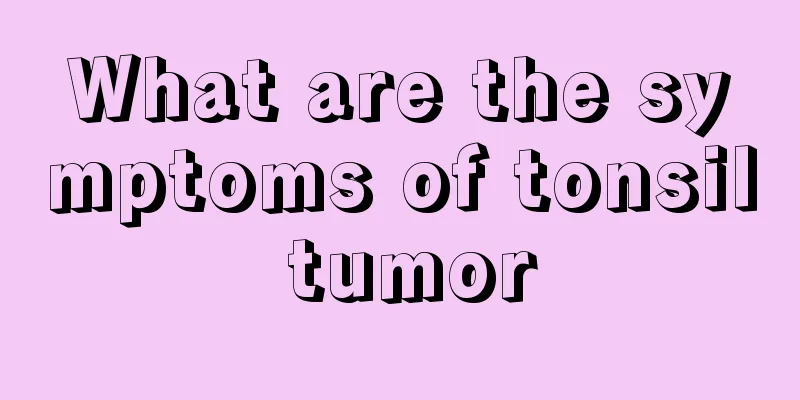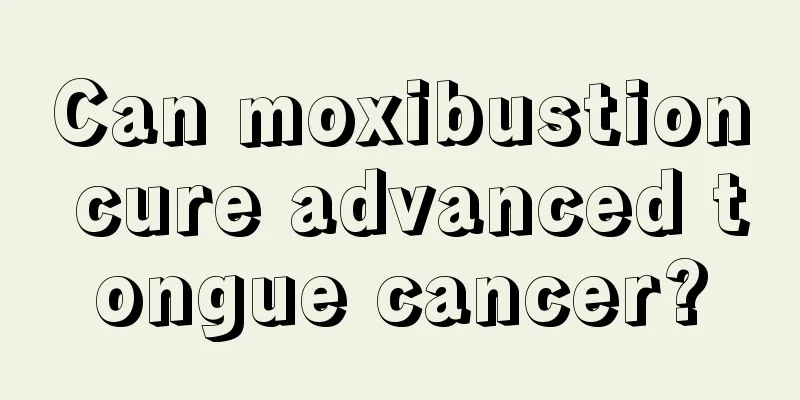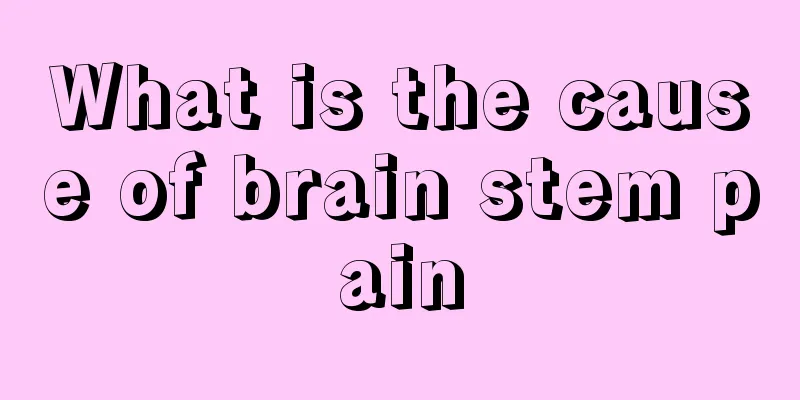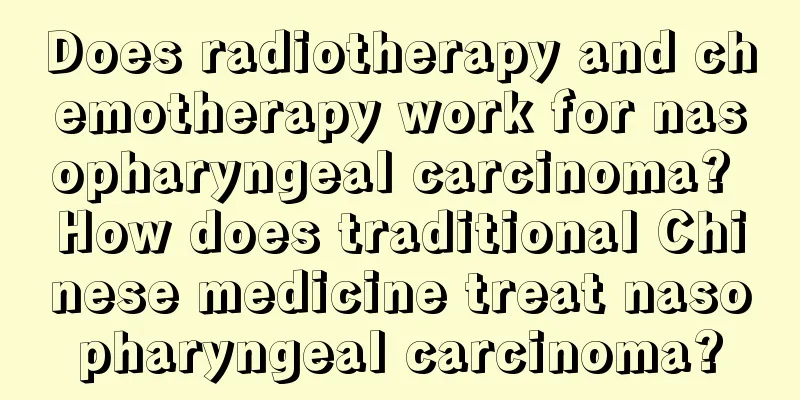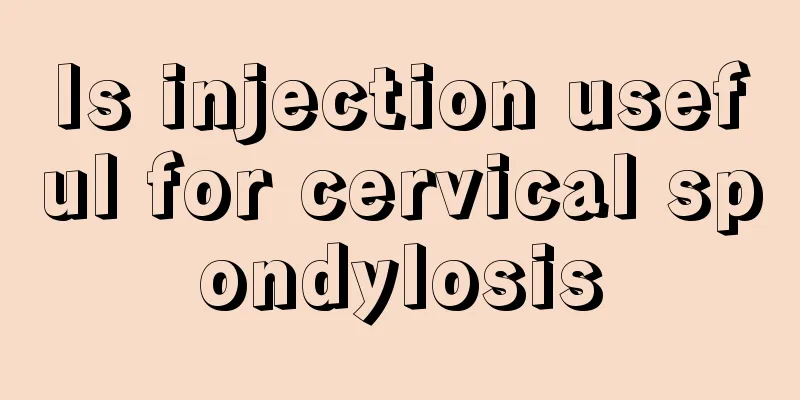Traumatic subarachnoid hemorrhage should be treated promptly

|
Subarachnoid hemorrhage has primary causes and secondary factors. The most common secondary factor is trauma. Subarachnoid hemorrhage caused by trauma must be treated in time, and bed rest is required. Choose appropriate treatment methods according to your condition, but many require surgical treatment. 1. Medical treatment (1) General treatment: SAH patients should be hospitalized for monitoring and treatment, and should rest in bed for 4 to 6 weeks with the head of the bed elevated 15° to 20°. The ward should be kept quiet, comfortable, and dimly lit. Avoid factors that cause increased blood pressure and intracranial pressure, such as straining during bowel movements, coughing, sneezing, and emotional excitement, to prevent aneurysm rupture. Because patients with hypertension have an increased risk of death, blood pressure should be lowered prudently to 160/100 mmHg, usually with bed rest and mild sedation. Painkillers can be used for headaches, and laxatives can be used to keep the bowels open. Appropriate amounts of normal saline should be given to ensure normal blood volume and adequate cerebral perfusion. Hyponatremia is common and can be treated with oral NaCl or 3% normal saline intravenous drip. Fluid restriction should not be used. ECG monitoring is used to prevent arrhythmias, and attention is paid to nutritional support to prevent complications. Avoid using drugs that damage platelet function, such as aspirin. (2) SAH causes increased intracranial pressure, which can be treated with dehydration and intracranial pressure-reducing drugs such as 20% mannitol, furosemide (furosemide) and human serum albumin (albumin). Patients with obvious signs of intracranial hypertension and a tendency toward brain herniation can undergo subtemporal decompression and ventricular drainage to save their lives. (3) Prevention of rebleeding: Antifibrinolytic drugs can inhibit the formation of plasmin, delay the dissolution of blood clots and prevent rebleeding. Aminocaproic acid (6-aminocaproic acid) 4-6g is commonly added to 100ml of 0.9% normal saline for intravenous drip, which should be completed within 15-30min. Then, 1g/h is dripped intravenously for 12-24h; then 24g/d for 3-7 days, and gradually reduced to 8g/d for 2-3 weeks. It should be used with caution in patients with renal dysfunction, as the side effect is deep vein thrombosis. Aminobenzoic acid (hemostatic aromatic acid) 0.4g is slowly injected intravenously twice a day, or procoagulants (Lisitase), vitamin K3, etc., but the use of hemostatic drugs is still controversial. Hypertension accompanied by epileptic seizures can increase the risk of aneurysm rupture. The preventive use of anti-epileptic drugs such as phenytoin (phenytoin sodium) 300 mg/d is routinely recommended. (4) Preventive use of calcium channel antagonists: nimodipine 40 mg orally, 4 to 6 times a day, for 21 consecutive days; nimodipine (nifedipine) 10 mg/d, slowly intravenously dripped within 6 hours, for 7 to 14 days as a course of treatment. It can reduce ischemic complications caused by delayed vasospasm after aneurysm rupture. Vasospasm can be treated by raising blood pressure with phenylephrine (phenylephrine) or dopamine, which is safer after surgical treatment of an aneurysm. 2. Surgical treatment It is an effective method to eradicate the cause and prevent recurrence. (1) Aneurysm: The final surgical treatment for ruptured aneurysm usually includes aneurysm neck clipping, aneurysm resection, etc. The patient's consciousness status is closely related to prognosis. The Hunt and Hess grading method (Table 2) is clinically useful in determining the timing of surgery and judging prognosis. Surgery can improve clinical outcomes in patients who are fully awake (Hunt score I, II) or mildly confused (III), but patients who are drowsy (IV) or comatose (V) do not seem to benefit. The optimal timing for surgery remains controversial. Current evidence supports early surgery (2 days after bleeding), which can shorten the risk period of rebleeding and allow the use of volume expanders and pressors to treat vasospasm. The treatment of unruptured aneurysms should be individualized. Young patients, patients with a family history of aneurysm rupture and patients with low surgical risk are suitable for surgery, while patients with asymptomatic aneurysms are suitable for conservative treatment. Endovascular interventional therapy uses superselective catheter technology, detachable balloon or platinum microcoil embolization to treat aneurysms. (2) Arteriovenous malformation: It is most reasonable to strive for complete resection. Other options include ligation of the supplying artery, intravascular embolization, or gamma knife treatment. Since the risk of early rebleeding of arteriovenous malformations is much lower than that of aneurysms, surgery can be performed at an elective time. Prognosis |
<<: The success rate of arachnoid cyst surgery, choose scientific surgery
>>: How to make grass jelly milk tea, two common methods
Recommend
Is a marriage check-up the same as a pre-pregnancy check-up?
The issue of premarital examination is most easil...
Is nasopharyngeal carcinoma contagious?
Is nasopharyngeal carcinoma contagious? Nasophary...
The thumb shakes when it is bent
The tremor that occurs when the thumb is bent is ...
Is mutton a spicy food?
Mutton is a warm food. Eating more mutton in wint...
What is the cure rate of lung cancer
The probability of early cure of lung cancer is r...
What are the exercises for the early stages of kidney cancer
Because there are great differences in the nature...
Are eels poisonous?
I believe that everyone has eaten various kinds o...
What should I do if my face keeps turning red after an allergy?
Sensitive skin not only brings harm to people'...
To diagnose cervical cancer, you must actively participate in various cervical screenings
Cervical cancer often worsens during menstruation...
What are the symptoms of HPV18 positive
The main symptoms of HPV18 positive are some ligh...
Spring health tips: Eating fragrant food promotes the growth of Yang Qi
Spring is a good season for all things to come ba...
The harm of compressed board furniture to human body
After buying a new house, people start buying all...
Is capsaicin harmful to the body?
Chili pepper is a very common food in daily life....
Food is not digested and accumulates in the chest
Everyone must have encountered the situation of n...
How to treat itchy and peeling hands?
Hands are very important. Many ladies who love be...
